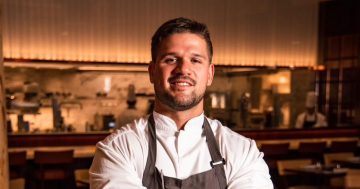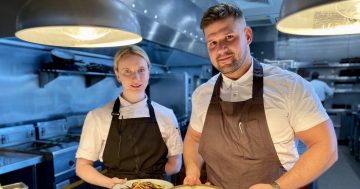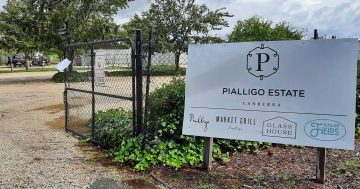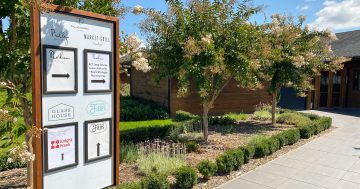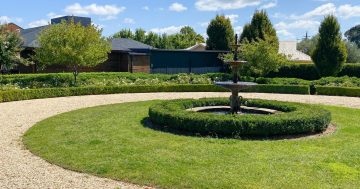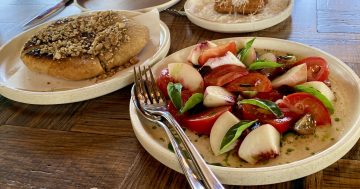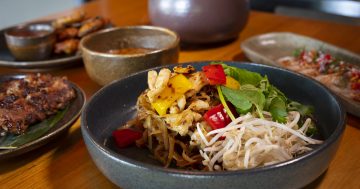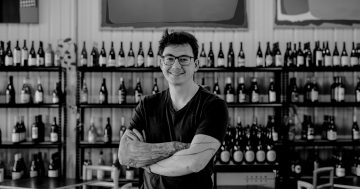
Before I start this article, I need to issue a warning to anyone who gets a bit nervous around vegetables, especially a lot of vegetables. We all know we don’t eat enough of them, but I am taking the carrot by its top. I am determined to add to my cooking repertoire; specifically my vegetable repertoire. I am going ‘back to school’ and hope to learn lots of news ways to serve up the abundance of fresh vegetables and herbs that are available at this time of year.
It is early in the week, quite early for me as it is before my first coffee. I am driving east out of Canberra towards the NSW border. Just short of the Canberra International Airport, I turn into the locale of my very favourite Canberra nurseries and restaurants. I drive the full length of Pialligo to my final destination – the intriguing Pialligo Estate. The car park faces onto the popular rustic Farmhouse Restaurant. Beyond are garden pavilions, a very well-situated function centre, kitchen gardens, open fields, vineyards, a vast olive grove (with 400 Coriggiola olive trees a Tuscan variety well suited to the Canberra climate), and the unpredictable, sometimes murky Molonglo River. The Estate covers 55 hectares and is a lovely rural precinct with a lot on offer. It is a peaceful morning, the sun is shining, I am surrounded by the beautiful Estate, and yet I am only ten minutes from the centre of Canberra.
I have been curious about what has been going on in Pialligo in recent times. I have arrived for a cooking masterclass at the Pialligo Estate Academy, and it is all about vegetables. More precisely vegetables and herbs from the Pialligo Estate organic kitchen garden, picked fresh for the occasion.
As an amateur Canberra history enthusiast, I know the Pialligo Estate occupies a large flat and fertile area near the river and was important as an early market garden. Indeed long-standing Canberrans immediately identify Pialligo with its many apple orchards. As it turns out, this area was cultivated as early as 1820. Close to the river, the soil is quite different to that clay-laden mass that most of us have to deal with in our suburban gardens.
Pialligo is slowly reinventing itself; there is an interesting Pialligo master plan on the table, although I hope it doesn’t stay there too much longer, and the Pialligo Estate has already consolidated itself as a significant centre for regional culinary tourism.
I admire the people who have the vision for this venture; it has already changed the way we think about food and what we eat in Canberra. These garden pavilions are a concept unique to Canberra. We are so used to eating in restaurants in shopping centres and raving about the food, but are left uninspired by our surroundings. Even very good restaurants mostly only have views of suburban shopping centre carparks and the often dramatic events that occasionally unfold.
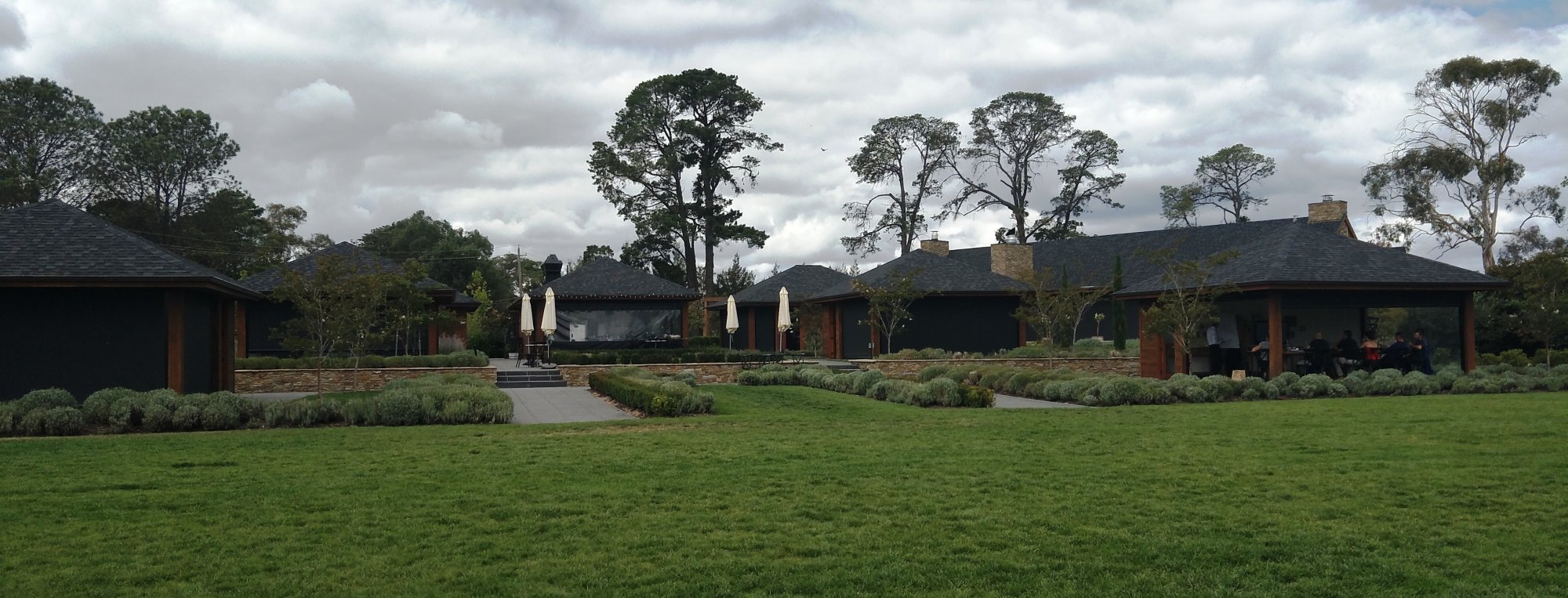
Standing on the lawns below the pavilions, and looking out onto the Estate vineyard, olive groves and the line of trees along the riverbank, it is possible to image you are somewhere quite different to Canberra. For a moment, I could be in Italy. But back to reality; I can actually see Parliament House.
During March there are a great range of courses, including salads, soups, and pickling. On last checking there are places available in some of the morning and afternoon classes. Training Manager Diana Ryan is busy scheduling for April and May; offerings could include an Easter Egg class with a chocolatier; table arrangments; cocktails; and even yoga. The programme is based on the concept of ‘life-long learning’ and this exactly meets my ongoing belief that any day I don’t learn something new, is a day wasted. I am ready for some inspiration and new ideas, and I am ready to be tempted by “The Tempting Vegetable Garden”.

Tomatoes stuffed with buckwheat, dried fruit and nuts, served with a herbed quark
I join a small class of enthusiastic students in the really well-equipped central pavilion kitchen and as the morning progresses, I am not in the least bit disappointed with what turns out to be the complete culinary experience. We are using only the freshest and seasonal vegetables and aromatic herbs from the Pialligo Estate organic market garden, and our ‘guide’ for the day is Michelin-starred chef, Jan Gundlach. Jan is the Culinary Director of the Pialligo Estate and proves incredibly generous with sharing his expertise. None of the participants identify as vegetarians; we all just want to get better acquainted with fresh vegetables and herbs. We soon learn we are spoilt for choice and the whole masterclass turns into a bit of a culinary rollercoaster!

Preparing for the “Baked on Onions on ‘hay” with olive leaves, thyme and basil
Our first dish was baked onions on ‘hay’. We all looked at each other a bit blankly until Jan explained the ‘hay’ is a particular terminology he uses for baking vegetables on a variety of aromatic herbs, including olive branches, dried fennel heads and thyme from the garden, baked ‘dry’ and then drizzling the cooked dish with olive oil, allowing the full flavour of the olive oil to come out.
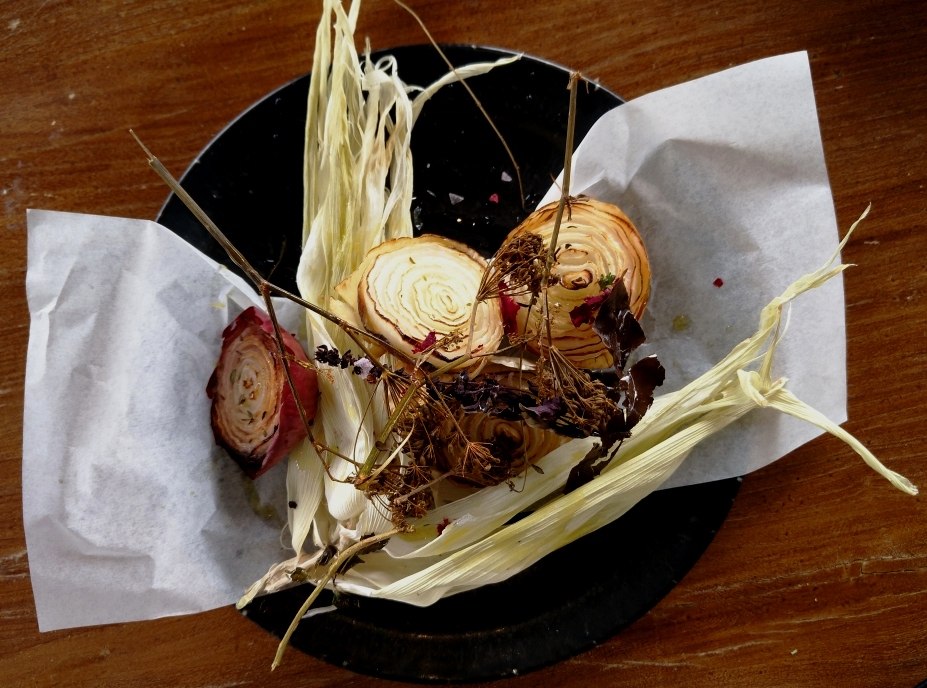
The three hours we spent in the kitchen reminded us all that it is important to think seasonal, and then select different vegetables for colour, texture and nutrition. We learn correct preparation and cooking methods to get the full flavor from a variety of vegetables and herbs.

Colourful Provencale-style vegetables, cut into similar sizes and cooked in drizzled olive oil

This dish was presented at the table in two ways. Firstly only with freshly applied olive oil, and then with the addition of olives, soft feta and pesto – so full of flavour
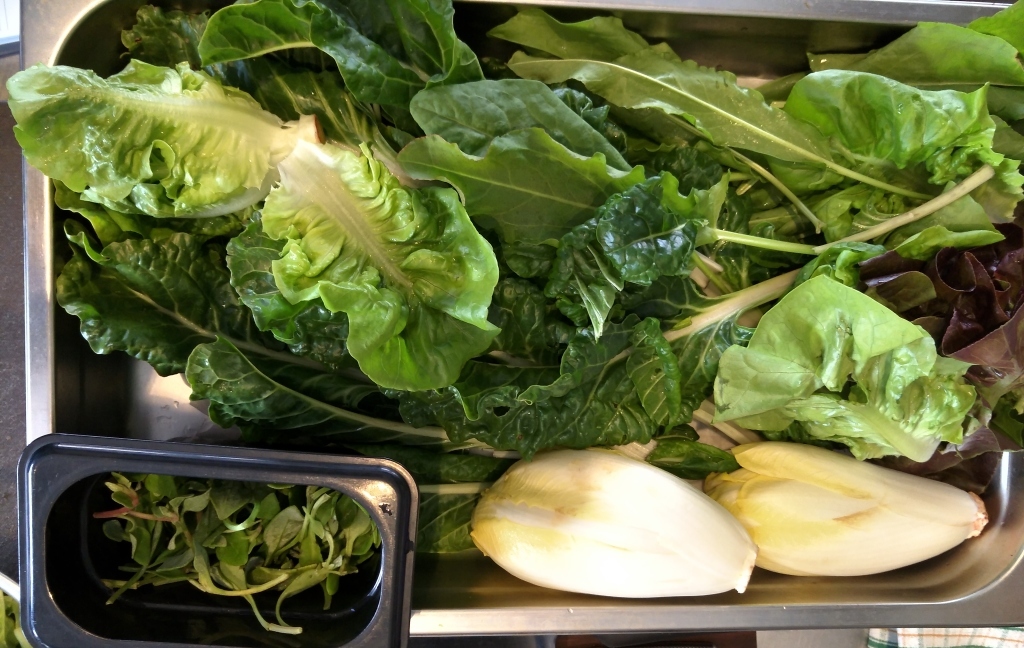
These salad leaves, witlof and saltbush were quickly braised with the delicious stock we had made and presented as a side dish
What else did we learn? We discussed different types of salt, including Malden, Himalayan Pink, Murray River, and discovered how easy it is to make specialty salts at home including lemon salt with lemon zest, and floral salt with rose petals.
We had a lesson in selecting olive oil. Without going into too much detail, there are a whole lot of reasons why we should pick Australian olive oil. First of all, it is Australian and therefore is the best. Australian oil will have a bottling or a use-by date, indicating how fresh it is. We tasted a beautiful robust Alto olive oil from a grove near Laggan, NSW, warming it with our hands, smelling and breathing in, then finally sipping and letting the oil sit on the taste buds – delicious!
Sadly Pialligo Estate lost their recent vintage in the Smokehouse fire last year, but the olive trees are groaning, the olives will be picked in April and sometime soon after that the first of the pressings will be available – I can’t wait. I think probably the best hurdle overcome was cooking with butter and returning it to its rightful culinary status – it truly elevates any vegetable dish from good to ambrosial. All in all a great success, and I have officially graduated and moved well away from my former ‘healthy, steamed vegetable” status.
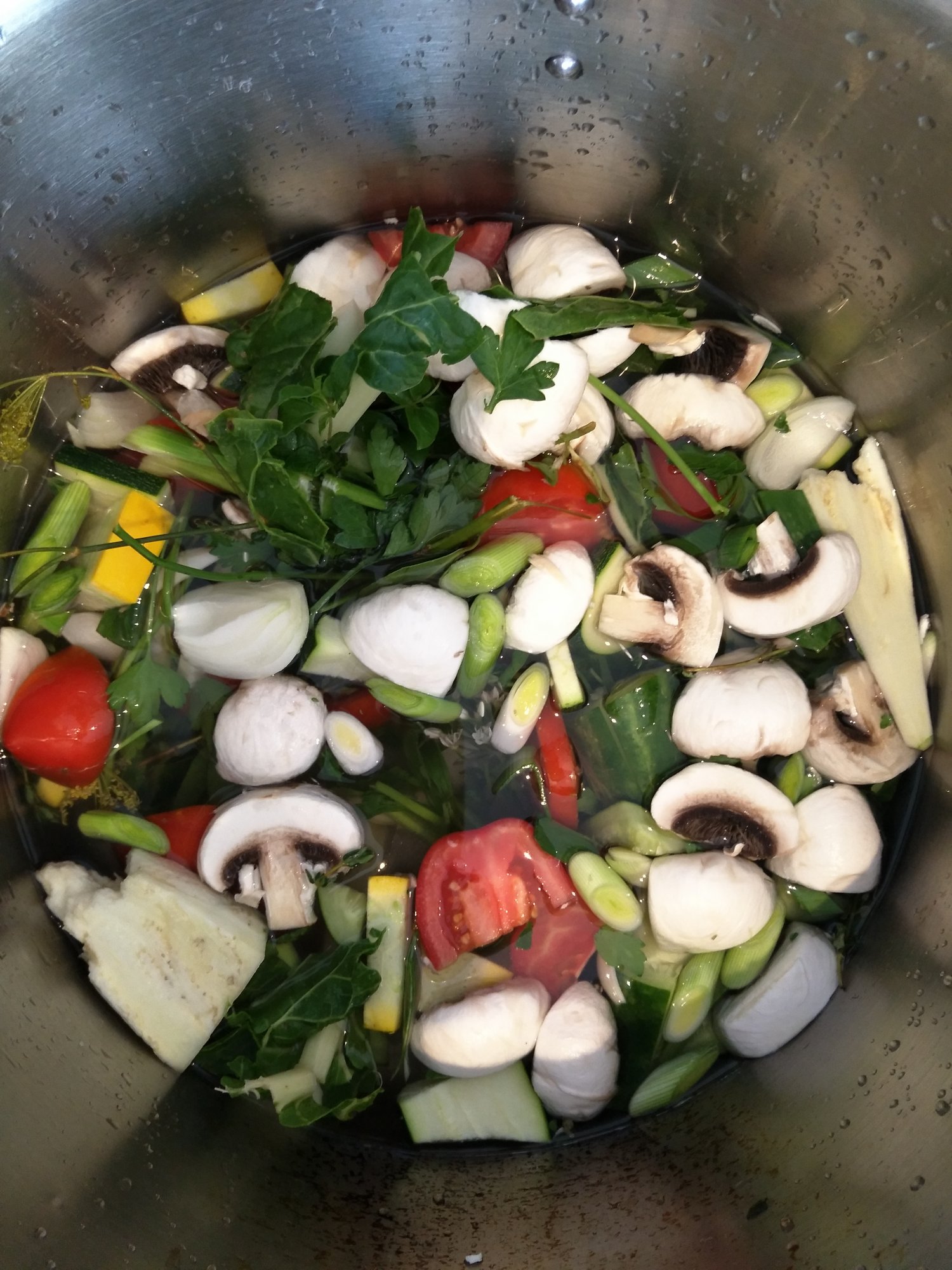
Nothing was wasted! Every bit of left over vegetable was cast into a pot to make the most delicate, almost sweet vegetable broth that moistened a number of the delicious vegetable dishes we created.
We then adjourned to the chief’s table to eat. We had time to savour each of the dishes, each featuring beautifully scented herbs, fresh vegetables from the organic market garden, all washed down with an excellent Four Winds Rose. We then set out on a ‘post prandial’ stroll down towards the river to inspect what was growing in the market garden.
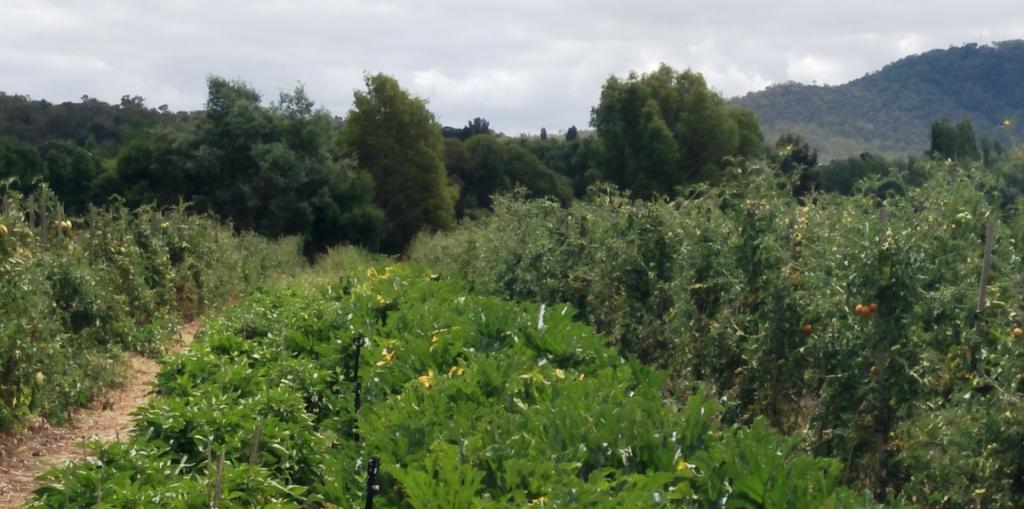
Different types of tomatoes, zucchinis, eggplant, squash, chilies – all grown organically on rich Molonglo soil
The market garden is seasonally planted in consultation with the culinary team and produces a wide range of vegetables, herbs and flowers.
We stroll back through the Paul Bangay designed orchard, indulging in some freshly-picked, sun-warmed figs, only to find an unexpected extra wicked dessert, fresh out of the oven: a chocolate and salted caramel tart.
It was a most enjoyable day; I learned to go beyond my comfort zone and create vegetable dishes that I can confidently serve to vegetarian and vegan friends, and also how to make my day-to-day cooking far more healthy, varied and interesting. As I head away from this secluded corner of Canberra, I am convinced that life is absolutely not too short to stuff a tomato, and I will be back for a future masterclass, or just a quiet lunch in one of the pavilions with a group of friends.
